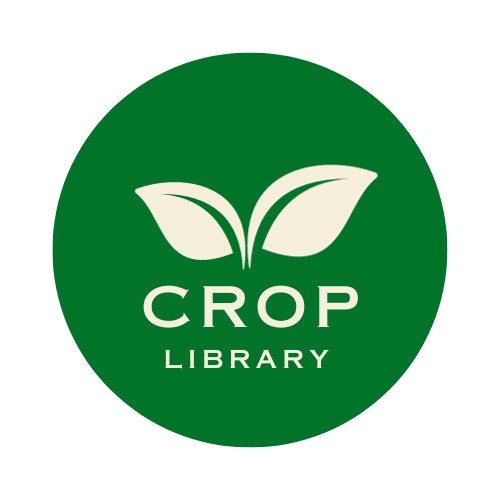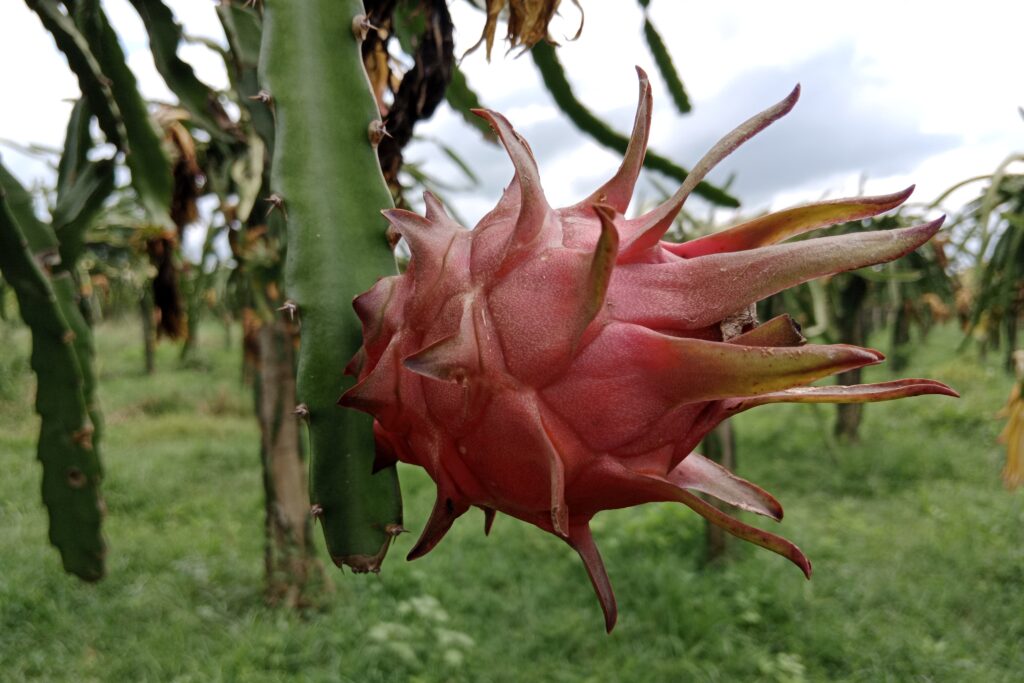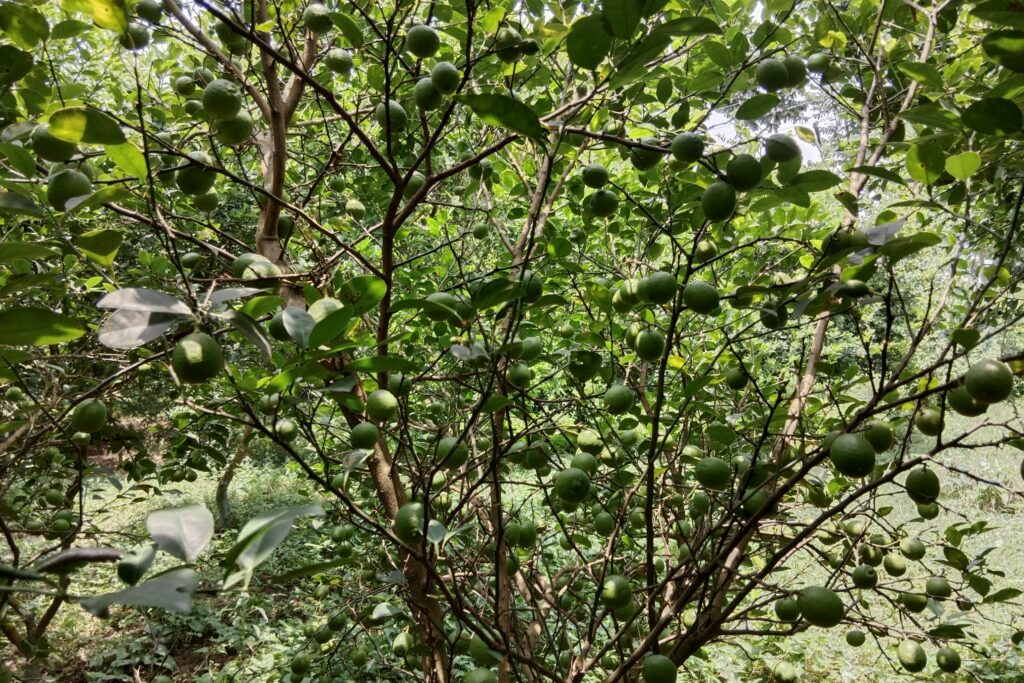Introduction
Lemon farming has become a highly profitable and sustainable agricultural venture, appealing to both small-scale and commercial farmers. Renowned for its consistent demand, long productive life, and steady yields, lemon cultivation offers a promising opportunity for those ready to invest in effective farming practices. Lemon trees begin to bear fruit within three years and can remain productive for 18–20 years, providing farmers with a stable and long-term income source.
The lemon farming profit hinges on efficient orchard management, which includes optimal planting density, advanced irrigation systems, effective pest control, and proper fertilization methods. By adopting modern agricultural techniques, farmers can boost fruit production, reduce losses, and enhance overall returns.
This article explores the investment needed, annual yield estimates, and income potential of growing lemons on one acre of land. Whether you’re a newcomer considering citrus farming or an experienced farmer looking to diversify your crops, this guide offers essential insights into the profitability and sustainability of lemon farming.
Ideal Conditions for Lemon Farming
Lemon farming requires specific climatic and soil conditions to thrive and produce high yields. By ensuring the right environmental factors and proper farming techniques, farmers can maximize their profitability and extend the productive lifespan of their lemon orchards.

A). Climate Requirements
Lemons flourish in warm and humid climates with moderate winters. Extreme cold or frost can damage the trees, affecting flowering and fruit production. Ideally, temperatures between 25°C and 35°C promote healthy growth and higher yields. While lemons can tolerate drought to some extent, prolonged dry periods can impact fruit quality and size.
B). Soil Conditions
Sandy loam with a pH between 5.5 and 7.5 is ideal for lemon tree growth. Farmers should improve soil fertility by adding organic matter and balanced fertilizers to encourage robust root development and optimize fruit output. By ensuring that the trees receive vital nutrients, this method encourages rapid development and increased yields.
C). Planting System & Spacing
To ensure optimal tree growth and ease of farm management, a square planting system is recommended, with 5m x 5m spacing between trees. This arrangement provides enough room for each tree to spread its canopy, receive adequate sunlight, and allow for proper air circulation.
D). Number of Plants Per Acre
With the 5m x 5m spacing, a farmer can plant approximately 160 lemon trees per acre. This density ensures that each tree gets sufficient nutrients and water while also making harvesting and pest control more manageable.
E). Fruit-Bearing Age & Production Cycle
Lemon trees typically start bearing fruit within three years of planting. However, the yield is relatively low in the initial years and gradually increases as the tree matures. The peak production phase begins around the 7th year, during which trees produce the highest yields and maintain consistency in fruit output for the next several years.
F). Lifespan of Lemon Trees
Lemon trees have an average lifespan of 18–20 years, making them a long-term investment for farmers. Proper care, including regular pruning, fertilization, and pest management, can extend their productivity and ensure sustained income generation.
By ensuring the right climate, soil, spacing, and management practices, farmers can significantly boost their lemon yield and achieve maximum profitability from their orchards.
Also Read About: Mango Farming PROFIT per Hectare
Investment Breakdown for 1 Acre of Lemon Farming
A well-planned investment is crucial for the success of lemon farming. Below is the estimated cost structure for setting up a one-acre lemon orchard:
| Category | Estimated Cost (NRs.) |
| Land Preparation (plowing, leveling, pit digging) | 70,000 |
| Lemon Saplings (160 trees × NRs. 300) | 48,000 |
| Fertilizers and Manure | 80,000 |
| Irrigation System Setup (Drip) | 150,000 |
| Labor Costs (Planting, Maintenance) | 50,000 |
| Pest & Disease Control | 40,000 |
| Miscellaneous Costs (Pesticides, Mulch, etc.) | 60,000 |
| Total Investment Cost | 498,000 |
Annual Maintenance Cost for Lemon Farming
After your lemon farm is up and running, the emphasis switches to keeping the trees healthy and productive. The annual maintenance costs for lemon farming usually fall between NRs. 150,000 and NRs. 200,000 per acre after the second year. These expenses are necessary to guarantee the lemon trees’ extended lifespan, ideal growth, and excellent yields. A thorough explanation of these maintenance expenses is provided below:
A). Labor Costs
An important part of yearly maintenance is labor. Among the tasks are: • Pruning: Consistent pruning promotes healthy fruit output, enhances air circulation, and helps preserve the trees’ morphology.
- Weeding: Eliminating weeds reduces competition for water and nutrients.
- Harvesting: To prevent harming the fruit or the tree, labor is needed to delicately select the lemons.
- General Maintenance: This covers things like mulching, replanting as needed, and keeping an eye on the health of the trees.
The estimated annual cost is between 50,000 and 70,000 NRs.
B). Irrigation System Maintenance
Maintenance of Irrigation Systems
Particularly in arid seasons, lemon trees need steady watering. For effective water use, a drip irrigation system is best. The cost of maintenance consist of:
- Repairing Drip Lines: As a result of deterioration, drip lines may require replacement or repair over time.
- Water Pump Maintenance: Making sure the pump is operating correctly to provide water effectively.
- The cost of electricity, which powers the irrigation system.
The estimated annual cost is between NRs. 30,000 and 40,000
C). Fertilizers and Manure
Because they are heavy feeders, lemon trees need to be supplemented with nutrients on a regular basis in order to yield high-quality fruit. Among the maintenance tasks are:
Organic Manure
To increase soil fertility, use cow dung or compost. NPK (nitrogen, phosphorus, potassium) fertilizers are chemical fertilizers used to meet the nutritional requirements of trees.
Micronutrients
These include magnesium and zinc, which are necessary for normal growth.
The estimated annual cost is between 40,000 and 50,000 NRs.
D). Pest and Disease Control
Lemon trees are susceptible to pests like aphids, mites, and citrus leaf miners, as well as diseases like citrus canker and root rot. Maintenance includes:
- Pesticides: Regular application to control pest infestations.
- Fungicides: To prevent fungal diseases.
- Organic Solutions: Neem oil or other natural remedies for eco-friendly pest control.
Estimated Cost: NRs. 20,000–30,000 per year.
E). Miscellaneous Costs
The following additional costs could occur during the maintenance phase:
• Mulching: To control temperature and hold onto soil moisture.
• Tools and Equipment: Farming tool replacement or repair.
• Transportation: For moving supplies or produce.
The estimated annual cost is between 10,000 and 20,000 NRs.
Potential Income from 1 Acre of Lemon Farming
The yield per tree increases gradually as the plants mature. Below is the estimated production and income projection:
| Year | Yield/Tree (Kg) | Total Yield (Kg) | Fruit Loss (5%) (Kg) | Net Yield (Kg) | Market Price (NRs. / Kg) | Total Income (NRs.) |
| 3rd Year | 3 | 480 | 24 | 456 | 80 | 36,480 |
| 4th Year | 5 | 800 | 40 | 760 | 80 | 60,800 |
| 5th Year | 10 | 1600 | 80 | 1520 | 80 | 121,600 |
| 6th Year | 18 | 2880 | 144 | 2736 | 90 | 246,240 |
| 7th – 15th Year | 30 | 4800 | 240 | 4560 | 100 | 456,000 |
| 16th Year & Onward | 20 | 3200 | 160 | 3040 | 100 | 304,000 |
Profit Analysis of Lemon Farming Profit Analysis of Lemon Farming
Considering the investment and income data, the profit potential is high from the 5th year onward. Here’s a basic profit estimation:
- Initial Investment: NRs. 498,000 (one-time cost)
- Annual Maintenance Cost: NRs. 150,000–200,000
- Break-even Point: Between the 5th and 6th year
- Peak Profit Years: 7th to 15th year, with annual earnings exceeding NRs. 450,000
By the 7th year, farmers can generate significant profits, making lemon farming one of the most lucrative horticultural investments.
Key Strategies to Maximize Profits
To ensure the highest productivity and profitability from lemon farming, farmers must adopt advanced agricultural techniques and strategic market practices. Below are the key strategies explained in detail:
A). Drip Irrigation: Precision Water Management
Drip irrigation is a highly efficient method of watering plants directly at the root zone, minimizing water wastage and enhancing fruit yield.
Advantages
- Provides consistent moisture, ensuring optimal growth and fruit development.
- Reduces water consumption by up to 50% compared to traditional irrigation methods.
- Prevents waterlogging and soil erosion.
- Lowers the risk of disease by keeping foliage dry.
Implementation Tip: Use automated drip irrigation systems with timers to save time and labor costs while ensuring uniform water distribution.
B). Organic Fertilization: Boosting Soil Health Naturally
Organic fertilizers, such as compost, cow manure, and green manure play a vital role in enhancing soil fertility while minimizing reliance on chemical inputs.
Advantages
- Improves soil structure, water retention, and nutrient availability.
- Encourages beneficial soil microorganisms that aid plant growth.
- Reduces input costs and ensures compliance with eco-friendly farming practices.
Implementation Tip: Apply organic fertilizers during key growth stages, such as flowering and fruiting, to maximize nutrient uptake.
C). Proper Pest & Disease Management
Lemon trees are vulnerable to pests such as citrus leaf miners and diseases like root rot and citrus canker, but effective management practices can significantly reduce losses. Implementing proper pest and disease control offers several advantages: it protects crops from damage that can negatively affect fruit yield and quality, reduces the reliance on chemical pesticides through integrated pest management (IPM) strategies, and saves money by preventing extensive damage through early intervention.
D). Market Linkage & Value Addition
Building strong market connections and exploring value-added product opportunities can significantly boost profits.
Advantages
- Selling directly to local or regional buyers eliminates middlemen, ensuring better prices for your produce.
- Creating value-added products, such as lemon juice, pickles, dried lemons, or essential oils, opens new revenue streams.
- Access to export markets can provide higher returns, especially for organic or premium-quality lemons.
Implementation Tips
- Direct Sales: Partner with local grocery stores, restaurants, and juice manufacturers to sell lemons at competitive prices.
- Value Addition: Set up a small processing unit to produce lemon-based products and market them under a unique brand name.
- Online Platforms: Leverage e-commerce platforms to expand your customer base and increase sales.
Conclusion
Lemon farming is a highly profitable agricultural venture when managed efficiently. With an initial investment of NRs. 498,000 per acre, farmers can break even by the 5th or 6th year and earn NRs. 450,000+ annually from the 7th year onward. By implementing modern irrigation, organic fertilization, and effective pest control, lemon growers can ensure sustainable and long-term profitability. If you are considering lemon farming, now is the time to invest and reap long-term rewards!



Pingback: Apple Farming Profit per Acre: Step by Step Guide -